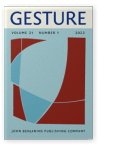Vol. 21:1 (2022) ► pp.82–114
Managing co-presence with a wave of the hand
Waving as an interactional resource in openings and closings of video-mediated breaks from work
The article examines naturally-occuring video-mediated breaks from work as social activity and focuses on the use of waving gestures in their openings and closings. Drawing on multimodal conversation analysis as a research method and recorded virtual breaks of two work communities in Finland as data, the study shows that, contrary to openings and closings in a physical breakroom at the workplace, waving ‘hello’ or ‘goodbye’ is a prevalent practice in video-mediated break openings and closings. By waving their hand(s), which is typically accompanied by a verbal greeting or farewell, participants make their own arrival or departure, or their orientation to the arrival or departure of someone else, visible and explicit. Thus, waving facilitates the management of co-presence in technology-mediated encounters. Further, by waving in conjunction with other upgraded features of openings and closings, participants engage in important relationship maintenance work during their encounter.
Article outline
- Introduction
- Interactional resources for openings and closings
- Data and method
- Analysis and findings
- Waving hello
- Waving when Opening an Encounter
- Waving when Joining an Ongoing Encounter
- Waving goodbye
- Waving when Leaving an Encounter
- Waving when closing an encounter
- Waving hello
- Discussion
- Acknowledgements
- Notes
-
References
